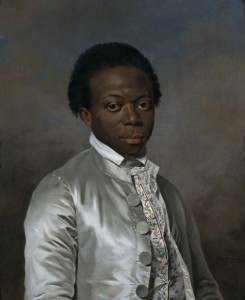Can you name five women artists creating work bef ore the 20th century? That was the question Director of Education Lynn Norris asked herself last fall. Marie Victoire Lemoine’s Young Man in an Embroidered Vest, which lives in the Lovett Gallery with the Meissen Collection, was scheduled to go on loan this summer to exhibitions at the Cornell Museum/Rollins College and at the National Gallery of Art. The Museum is in the planning stages of a major retrospective on Augusta Savage for 2018, and artworks by Marie Laurencin, Anna Hyatt Huntington, and Janet Scudder are part of the Permanent Collection, but only Lemoine is before the 20th century.
ore the 20th century? That was the question Director of Education Lynn Norris asked herself last fall. Marie Victoire Lemoine’s Young Man in an Embroidered Vest, which lives in the Lovett Gallery with the Meissen Collection, was scheduled to go on loan this summer to exhibitions at the Cornell Museum/Rollins College and at the National Gallery of Art. The Museum is in the planning stages of a major retrospective on Augusta Savage for 2018, and artworks by Marie Laurencin, Anna Hyatt Huntington, and Janet Scudder are part of the Permanent Collection, but only Lemoine is before the 20th century.
In the 1970s, Lynn was an undergraduate when the first generation of feminist historians appeared in the academic ranks. They were a wild and woolly bunch. Art historian Linda Nochlin threw the first bomb when she asked, “Why are there no great women artists?” Then came the Guerrilla Girls. For the next 40 years, art historians cracked open the dustbin of history, and art made by women from across the centuries spilled onto the exhibition floor. Women, who were recognized as major artists in their own time, had been left out when the history books were written. Their art disappeared over time or was attributed to a male artist. How and why did that happen?
For the answers to those questions or to add to your list of major woman artists, please join Lynn on September 13 at 1:30 p.m. to begin a four-part series on Women Artists: From the Renaissance to Abstract Expressionism.
Marie-Victoire Lemoine (French, 1754 – 1820), Portrait of a Youth in an Embroidered Vest, 1785, oil on canvas, 25 5/8 x 21 1Ž2 in., Purchased with funds from the Cummer Council, AP.1994.3.1.


